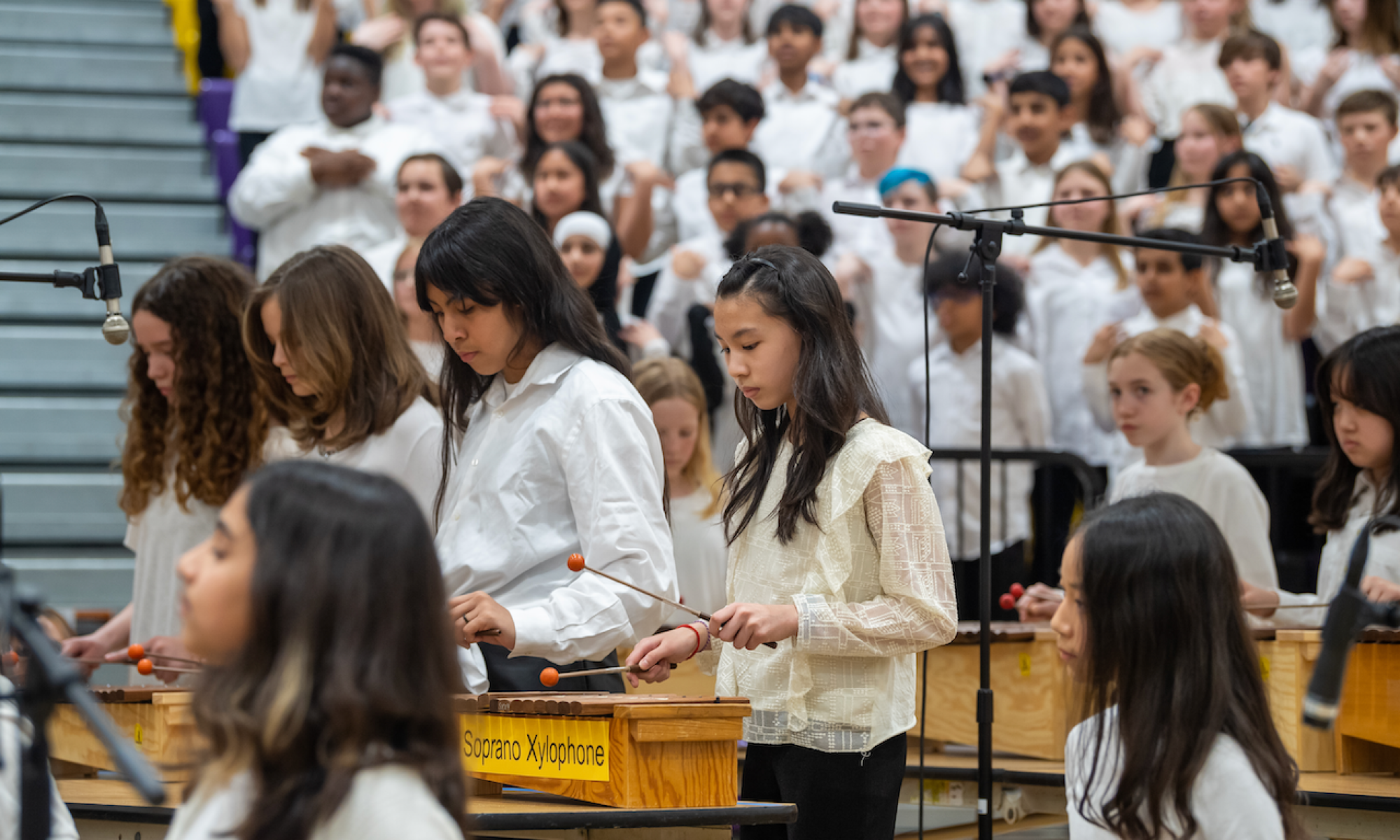by Cheryl Baker, Mount Eagle ES
Last year, I had the opportunity to teach a special music class to my primary classes. Each quarter, I focused on some aspect of music (dance, musical drama, intensive Orff instruments and music and puppets). This article will focus on my experience with the quarter I taught dance. For a whole quarter, we danced. Kindergarten, First and Second grades. When I first began teaching, I had no idea how to teach a bunch of wiggly little kids how to dance, but once I learned to break down the skills needed for that dance, the teaching process was much easier, and the children had a lot of fun!
For Kindergarten, I started out with dances that moved in a circle. We talked about how to hold hands while walking in a circle. We practiced walking in a circle and holding hands. Kindergarteners have to be taught EVERYTHING, so moving in a circle was a challenge for them. Issues that came up? “He’s squeezing my hand!” “He’s pulling my arm.” “She’s not going the right direction.” They would swing their arms while standing. They would pull everyone into the center of the circle. They would walk to overtake someone in front of them and pull the rest of the circle with them. All NOT what I wanted. So, we practiced. Soon, they could walk in a circle and sing a song like The Old Brass Wagon. That dance required changing direction (circle to the left, circle to the right). So, we practiced changing the direction until they got it. Eventually, they got really good at circles and we expanded into two lines facing each other (alley formation, similar to a contra dance). Once they got the basics, they were ready to fly!
For the First and Second graders, we worked quickly through circle dances, changing direction, experiencing going inward and outward, turning around, even changing partners in a circle! Pretty soon, they were doing alley formation dances from Chimes of Dunkirk. They LOVED it!. This year, when they came back to school, I reviewed some of the dances that they had done last year, and they all remembered them, and executed the dance with ease. I have created three grades that are ready to move in an organized folk dance, and they can’t wait to learn more.
The key is to practice the small sections of the dance first, then add it into the “real” dance. Discuss with the students ways to make the experience better. They always come up with good ideas. Explain to them how important it is that everyone know the dance moves so they can become a good dance partner and be part of a team! Everyone has to do it correctly for the dance to work out right. Everyone must be responsible to learn the moves. Be ready for train wrecks, because they sometimes happen. When the dance falls apart, just stop, figure out what happened, and try again. You’ll be amazed at the results in just a few weeks.
The other part is how you “call” the dance. It’s important to develop a way to give them a reminder about what’s next, but be consistent with your words. Otherwise, they will get confused. Forward, 2, 3, 4, Back 2, 3, 4. Side, side, side, side. Discuss what you mean with each “call” and soon they will be able to easily follow you.
If you would like a list of the dances that I accomplished with them, per grade level, please email me. Happy dancing!
